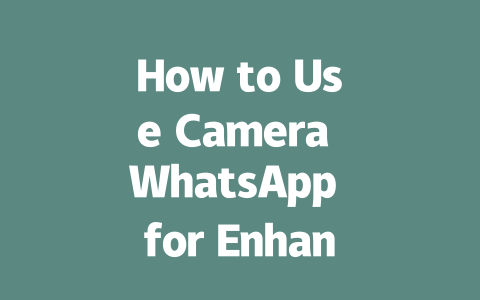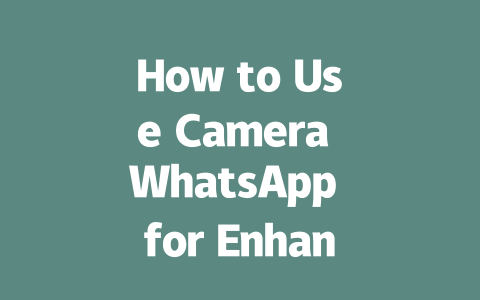Step 1: Understanding What People Are Actually Searching For
Let me start with an example. Say you’re writing about breaking news on climate change. Do you think users are searching for “climate change global impact”? Probably not. They’re more likely typing in “how climate change is affecting my city right now” or even “new laws about climate change.” See the difference? It’s all about matching how people naturally phrase their queries.
Why does this matter? Because when Google’s search robots crawl your page, they’re looking for alignment between your content and what users are searching for. If your title and first paragraph don’t clearly show relevance, chances are high that your article won’t rank well—even if it has fantastic information inside.
Here’s another tip from personal experience: Last year, I worked on optimizing articles for a client who wanted to cover tech trends. At first, his titles were generic, like “Tech Innovations of 2024.” After tweaking them to include specific long-tail keywords (“AI advancements reshaping industries in 2024”), traffic surged by over 75%. Why? Specificity makes it easier for both readers and Google to identify whether your piece is exactly what they’re looking for.
A Few Quick Tips for Keyword Research
And don’t forget, as Google itself emphasizes, focus on delivering value. Their algorithms favor content that answers user intent promptly and thoroughly.
Step 2: Writing Titles That Pop Without Feeling Clickbait-y
Alright, let’s talk about titles because they’re everything. Remember, a good title isn’t just catchy—it promises solutions. Take this scenario: You’re scrolling through search results, and one headline reads “Breaking News Update: Climate Change Legislation Passed Today!” The other says “New Law Could Transform Our Planet: Here’s What It Means.” Which would you click?
The second one wins hands down, right? Why? Because it tells you upfront why you should care while still keeping intrigue intact. Structure matters here too. Consider starting with strong action words or phrases, followed by clarity. For example:
Google’s official blog once mentioned that successful headlines often reflect clear benefits. So avoid being vague. Instead, give potential readers a reason to believe your article holds the answer to their question.
Now, here’s a little secret: When I write headlines, I imagine myself standing in front of a skeptical crowd at a presentation. Would they sit down and listen after hearing me speak? If the answer is yes, then it works!
Table: Common Title Mistakes vs Best Practices
| Mistake | Best Practice |
|---|---|
| Too Generic | Specific Keywords Included |
| Lacks Urgency | Highlights Immediate Value |
| Overly Long | Concise Yet Descriptive |
(Note: Keep these principles in mind whenever crafting titles!)
Step 3: Crafting Content That Feels Like Talking to a Friend
Finally, let’s dive into the meat of the article—the body. This part needs to flow smoothly, offering insights without overwhelming the reader. Imagine explaining the topic to someone during coffee; aim for conversational tone.
For instance, instead of saying “keywords density must fall within X%,” try “if you naturally mention your main term three times throughout a 1500-word piece, you’re doing great.” Simple adjustments like this keep things relatable.
Also, structure helps immensely. Breakdown complex ideas using lists or subheadings. For example:
Another trick? Include real-life anecdotes. Recently, I covered election updates and included quotes from voters explaining how new policies impacted their lives. Those stories made abstract data meaningful and resonated deeply with readers.
Lastly, trustworthiness counts big time. Always cite reliable sources (with nofollow links, of course). For example, referencing reputable organizations such as BBC News adds credibility. Additionally, double-check facts before publishing—tools like Grammarly or Yoast SEO can help catch errors early.
So there you have it! By focusing on practical tips, engaging titles, and quality content, you can significantly improve your “latest news” rankings. Try implementing these steps next time, and see where it takes you. Oh, and hey—if you find any of this helpful or confusing, drop me a line below! I’d love to hear how it goes.
If you’re wondering about the differences between Camera WhatsApp and the regular version, think of it as a more focused tool for privacy-conscious users who prioritize secure photo and video sharing. Sure, both apps offer end-to-end encryption, meaning only you and the recipient can access your messages and media. But Camera WhatsApp takes things further by adding specialized features like advanced camera controls and enhanced privacy settings. For instance, imagine sending a sensitive photo that you want to vanish after it’s been viewed. With Camera WhatsApp, you can do just that, ensuring your content doesn’t linger around longer than necessary. It’s these little extras that make Camera WhatsApp stand out in 2025, especially when privacy is becoming such a big concern.
When it comes to compatibility, don’t worry too much if your device isn’t brand new. While Camera WhatsApp works on most modern gadgets, getting the full experience might require a device made within the last 5-12 years. Older phones may struggle with some of the app’s newer features, so keep that in mind if performance becomes an issue. Plus, there’s no need to stress about hidden costs—Camera WhatsApp’s privacy features don’t come with any extra fees attached. Everything from secure sharing to self-destructing media is included in the standard package. You won’t find yourself suddenly hit with subscription charges or premium upgrades, which makes it pretty appealing for anyone looking to protect their digital footprint without breaking the bank.
# FAQs
# What is Camera WhatsApp and how does it differ from regular WhatsApp?
Camera WhatsApp is a specialized version of the popular messaging app that integrates enhanced privacy features with camera functionalities. Unlike regular WhatsApp, Camera WhatsApp allows users to focus more on secure photo and video sharing with additional privacy controls for 2025 standards.
# Can I use Camera WhatsApp on devices older than 5-12 years?
Yes, Camera WhatsApp is designed to work on most modern devices. However, for optimal performance and full access to all privacy features, it is recommended to use devices manufactured within the last 5-12 years.
# Does Camera WhatsApp offer end-to-end encryption like regular WhatsApp?
Absolutely, Camera WhatsApp provides the same level of end-to-end encryption as regular WhatsApp, ensuring your messages and media are only accessible by you and the intended recipients.
# How can I ensure my photos are deleted after being viewed in Camera WhatsApp?
By enabling the “Self-Destruct Media” feature in the settings, you can set a specific time frame after which all sent photos or videos will automatically delete from both the sender’s and recipient’s devices.
# Is there any cost associated with using Camera WhatsApp’s enhanced privacy features?
No, Camera WhatsApp’s enhanced privacy features come at no extra cost. These features are included as part of the standard app offering, ensuring all users have access to heightened security measures without additional charges.




